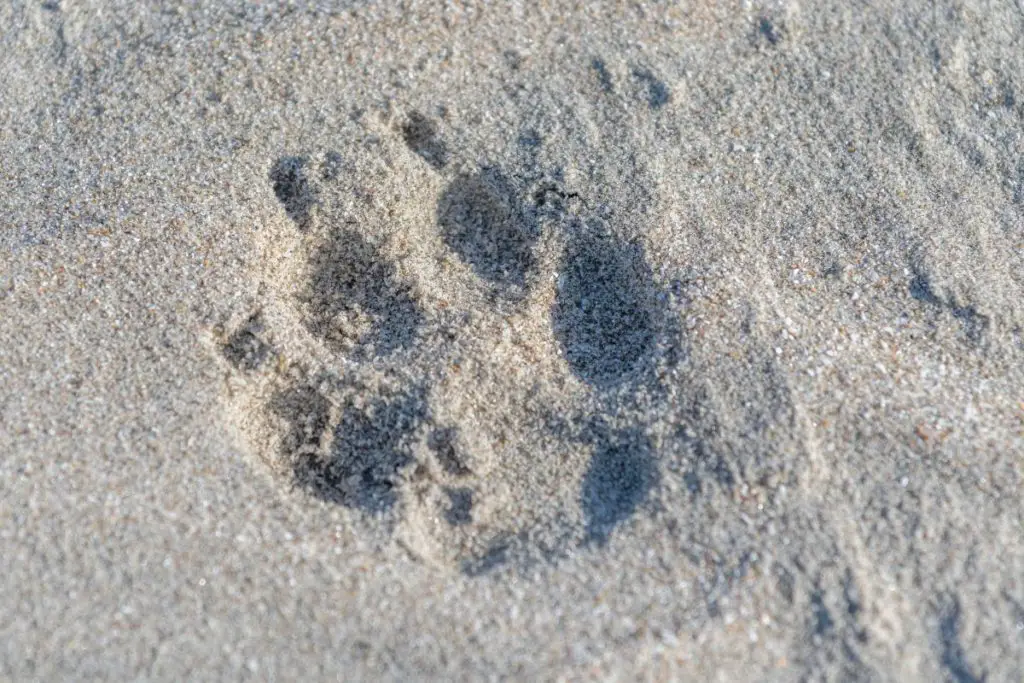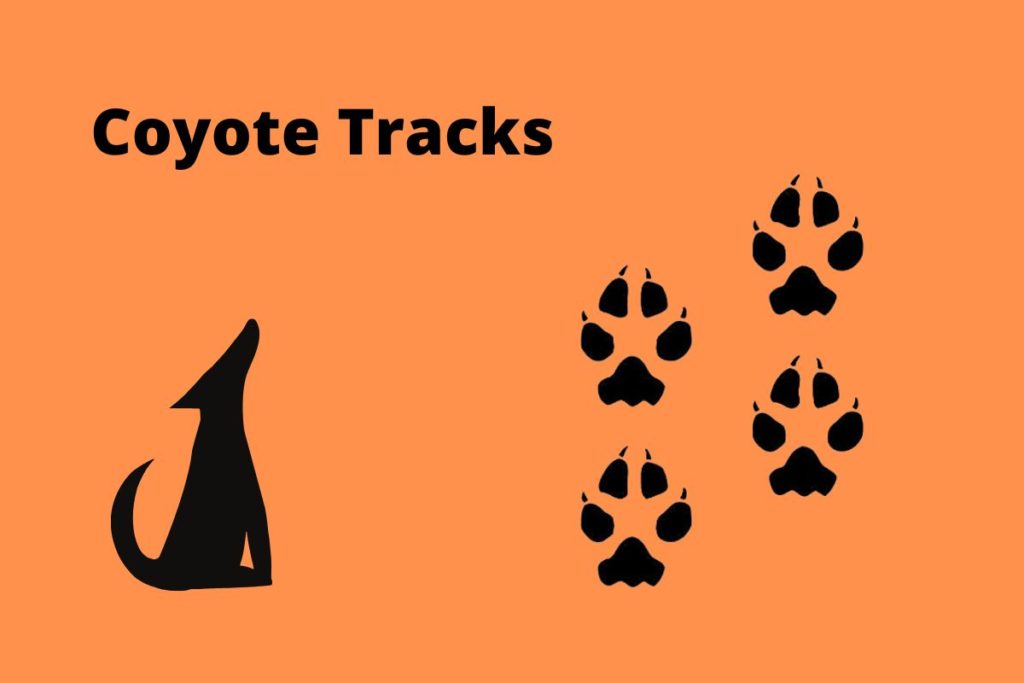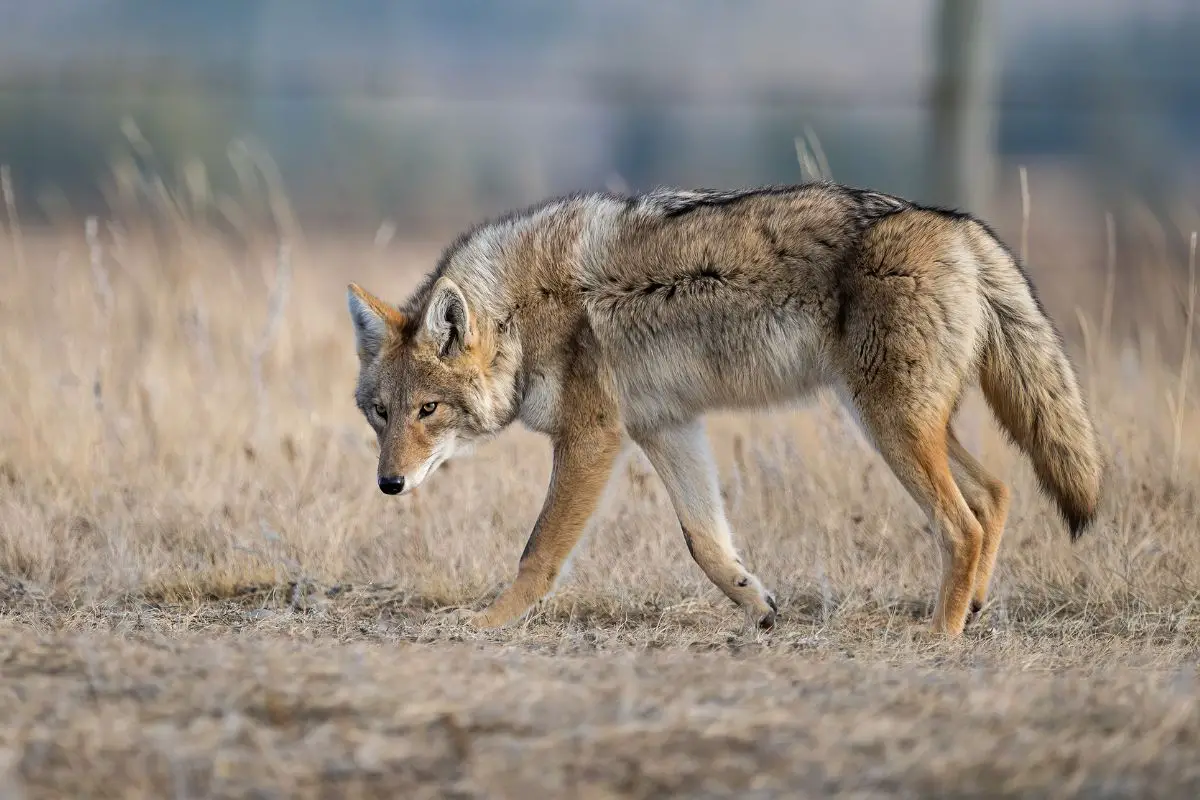If you’ve ever heard the sound of a pack of coyotes howling then you’ve probably wondered just how close they are. You might even have wondered exactly what coyote tracks look like and if you would be able to recognize them.
Determining if you have come across coyote tracks or not can sometimes be difficult, however, in this guide we’re going to show you what coyote tracks look like, and how to tell them from other tracks.
Coyote Footprints
Coyote tracks are the same in both front and rear feet. The average front foot track is 2 inches wide by 3 inches long. Very often, the rear track may appear slightly smaller than the front. The tracks contain four toes with claws and a heel pad. Additionally, the tracks are longer than they are wide.
Even though coyote tracks can be confused with tracks from other animals, there are things that you can look for, that will help you determine if they are from a coyote or not. Besides the tracks themselves, there can be other clues that coyotes might be around as well.

Coyote Track Characteristics
When looking at coyote tracks there are several things to consider. Altogether, these different elements can help us know what animal made the tracks. First, there is the trail. The trail is a path or series of track patterns, that coyotes travel on. Secondly, there is the straddle. The straddle is the total width of the trail, all tracks included.
Next, there is the register. There are two types of registers. The first one is called a direct register. What this means, is when the front foot is lifted, the rear foot on that side drops directly into the front track. Like cats and foxes, coyotes also use a direct register. Source.
The second type is the indirect register, sometimes used by animals such as black bears. As the front foot is picked up, the rear foot on that side drops slightly behind, and to the right or left of the front track.
How Do You Identify Coyote Tracks?
Coyote tracks are 2 inches wide by almost 3 inches in length. The tracks are usually the same size on both sides, however, sometimes they have a lead toe and claw on each foot, which will allow you to tell a difference between the left and right track.
Coyotes have four speeds; Walking, trotting, loping, and galloping. But no matter what gait they are using they usually travel in a straight line. Besides analyzing the individual paw print, this is the best way to determine if they are coyote tracks or if they were left by a domestic or wild dog.

Coyote Tracks In the Snow
Tracks left in the snow usually start out sharp and clean. How long they stay that way will depend on the weather and what time of day the track was made. As the temperature increases those edges, once crisp and clear, will start to round off.
On the other hand, when temperatures drop below freezing, ice crystals will start to develop within the track. If the snow is very loosely packed, the print may appear as a large hole punched into the snow.
Tracks left imprinted in the snow can give us a good idea of how old the track is. If there is snow built up in the track then we can usually determine that the track is more than a few hours old. If you come across a set of tracks in the morning and there are no ice crystals in it then it’s a good bet that the tracks were made that morning.
What’s The Difference Between Coyote Tracks and Bobcat Tracks?
Coyotes and bobcats share a similar range. Therefore where you find one you are likely to find the other. Of course, this is not always the case, but being able to determine which one might be nearby can be helpful.
Bobcat tracks are similar to those of the coyote in a couple of ways. With that being said, there are several ways to tell them apart. Coyote and bobcat tracks will both display four digits and a heel pad on both their front and hind feet.
One of the first differences you will notice in the individual tracks is the size. As we said earlier, the coyote track is about 1 ½ inches wide by about 2 ½ inches long.
The average weight of a bobcat is less than that of a coyote. For this reason, the tracks left by the bobcat tend to be smaller than those of the coyote. Bobcat tracks average about 1 ½ inches long by approximately 1 ⅜ inches wide. One might confuse the tracks of a bobcat with those of a gray fox more easily than those of a coyote.
Another difference between the two would be the appearance of claws. Coyote tracks will always show the claws. This is not so for the bobcat because their claws are retractable and will not show in the track 95% of the time. You will also find a difference in the heel pads of the two animals.
Coyotes have a heel pad with just one lobe in the front and two lobes in the rear. Bobcats, on the other hand, have two lobes on the front heel pad and three lobes on the rear. Finally, there’s the overall shape. Coyote tracks have an oval or egg shape while those of the bobcat are round.
See Bobcat Animal – For more information on bobcat tracks.
How Can You Tell Coyote Tracks From Fox Tracks?
Coyotes are, of course, much larger than foxes. Coyotes usually weigh almost twice as much as foxes do. This means that the coyote’s prints will dig deeper into the ground and they will be considerably larger.
While the coyote’s tracks are around 2 ½ to 3 inches long, foxes are only 2.25 inches long. Foxes have slender toes which make their tracks more petite. Coyotes have larger toes and footprints. Also, they have a large heel pad that has a center lobe that sticks out, whereas foxes have a chevron-shaped heel pad.
Coyote Or Dog Tracks?
Now here’s where it gets tricky. Because they are in the same family, dogs, wolves, and coyotes’ tracks, are all very similar and can be hard to tell apart. As with other animals, the first indicator of which of these three canines it might belong to is going to be the size.
We can quickly rule out the wolf because their tracks are going to be much larger than those of a coyote. For this reason, we can also rule out a large portion of domesticated dogs. For example, small breeds like chihuahuas have much smaller footprints.
Secondly, when trying to determine whether tracks were left by a coyote or a dog, take note of the claws. Coyote claws are sharper and will be somewhat less noticeable in the track. Dog claws will be much more prominent, usually longer and wider than those of the coyote.
Another difference will be the relative size of the toes. In the foot of a dog, the inner toes will be slightly larger than the outer toes. Conversely, coyotes’ outer toes will be slightly larger than the inner ones. Those of the wolf will be of equal size.
Another difference in the toes, between coyotes and dogs, is that a dog’s toes will be splayed which will make the track slightly more rounded and less of the oval shape that is common with coyotes. This is because the coyote’s toes point forward with little to no splay.
Also, because of the difference in the positioning of the toes, between coyotes and dogs, it is possible to draw an x in the negative space that appears in the track of the coyote. Whereas, in the tracks of dogs, this is not possible.
In Conclusion
Being able to understand the tracks and other evidence that animals leave behind is a useful and important skill. Biologists use it to help find animals, estimate wildlife populations, and gather data.
Although some tracks look similar, every wildlife species leaves a different track. Understanding these signs can help you understand what animals were in the area, what they were doing, and when they were there.Walking through a local park, natural area, or along a trail or the edge of a river can provide great opportunities to spot some of these tracks for yourself.
- Hero Farm Dog Survives Epic Battle with Coyote Pack - December 9, 2024
- The 10-Minute Bedtime Routine That Changed My Dog’s Sleep Forever - November 29, 2024
- Creating a Safe Space for Nervous Pets: Your Guide to Pet-Friendly Havens - November 25, 2024

